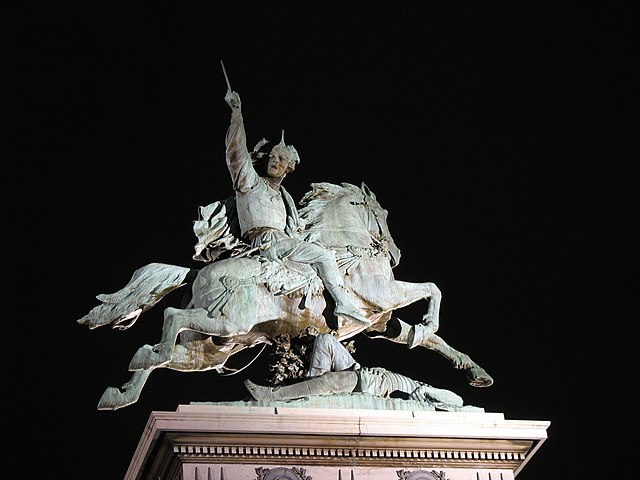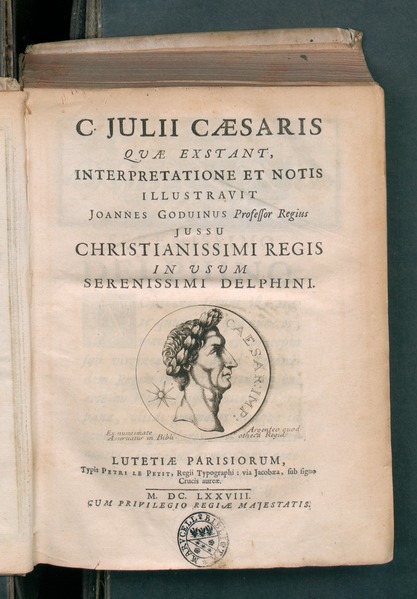Commentarii de Bello Gallico
Commentarii de Bello Gallico, also Bellum Gallicum, is Julius Caesar's firsthand account of the Gallic Wars, written as a third-person narrative. In it Caesar describes the battles and intrigues that took place in the nine years he spent fighting the Celtic and Germanic peoples in Gaul that opposed Roman conquest.
First page of De bello Gallico, from the editio princeps of Sweynheym and Pannartz, Rome, 1469
Statue of Vercingetorix, erected in 1903 in Clermont-Ferrand, France
C. Iulii Caesaris quae extant, 1678
The Gallic Wars were waged between 58 and 50 BC by the Roman general Julius Caesar against the peoples of Gaul. Gallic, Germanic, and Brittonic tribes fought to defend their homelands against an aggressive Roman campaign. The Wars culminated in the decisive Battle of Alesia in 52 BC, in which a complete Roman victory resulted in the expansion of the Roman Republic over the whole of Gaul. Though the collective Gallic armies were as strong as the Roman forces, the Gallic tribes' internal divisions eased victory for Caesar. Gallic chieftain Vercingetorix's attempt to unite the Gauls under a single banner came too late. Caesar portrayed the invasion as being a preemptive and defensive action, but historians agree that he fought the wars primarily to boost his political career and to pay off his debts. Still, Gaul was of significant military importance to the Romans. Native tribes in the region, both Gallic and Germanic, had attacked Rome several times. Conquering Gaul allowed Rome to secure the natural border of the river Rhine.

Vercingetorix Throws Down His Arms at the Feet of Julius Caesar, 1899, by Lionel Noel Royer
A modern re-enactor in 2012 wearing the gear that a VII legion standard bearer would have during the Gallic Wars era.
A modern re-enactor in 2018 with the typical panoply of a wealthier Gallic warrior.
The Tusculum portrait of Julius Caesar







